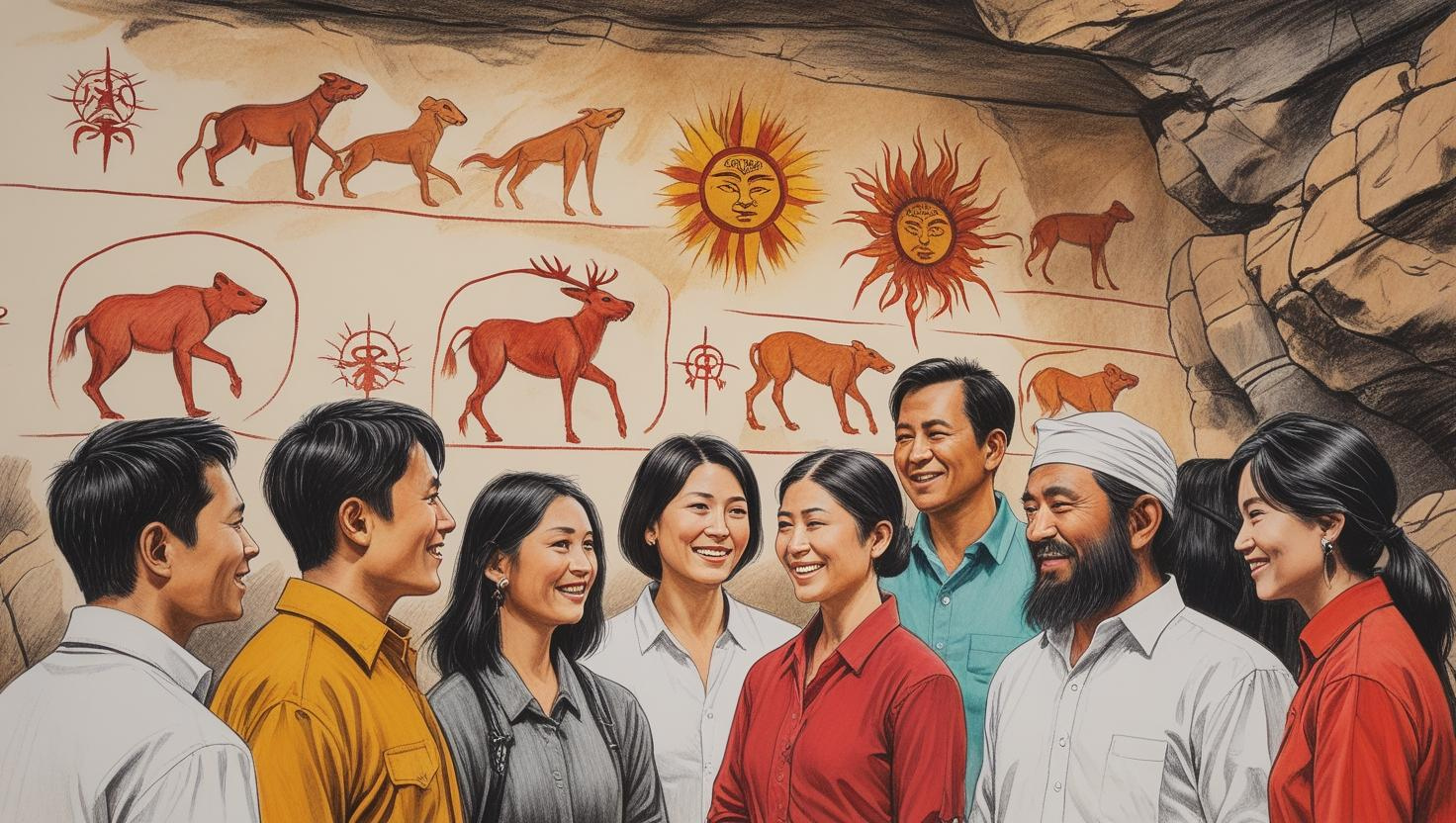Have you ever tried explaining something to someone who doesn’t speak your language? Maybe you used words, but they didn’t understand. Then, you picked up a pen, made a simple drawing, and suddenly everything clicked. That’s the magic of drawing it’s the world’s oldest and most universal language.
The Ancient Roots of Drawing as Communication
Long before spoken or written language, humans used pictures to express ideas. Our ancient ancestors the rishi and muni (sages) were the first teachers. They needed a way to explain complex knowledge and wisdom to many people from different regions. So, they used drawings and symbols. It didn’t matter if the listener was Chinese, Korean, Indian, or Nepali; the image told the same story to everyone.
In caves around the world from the Lascaux caves in France to Bhimbetka in India we find paintings made tens of thousands of years ago. These drawings show animals, hunting scenes, and everyday life. They are proof that humans instinctively understood how to communicate with pictures. No spoken words needed.
Why Drawing Is Universal
Drawing connects to the way our brains work. When you see an image, your mind instantly tries to make sense of it whether it’s a smiley face, a stick figure, or a symbol of the sun. The meaning comes from shared experiences and basic human understanding.
For example, a circle with rays around it is almost always understood as the sun, no matter what country you come from. A stick figure with arms raised might mean happiness or victory. These images tap into our collective knowledge.
A Real-Life Example from My Experience
I remember trying to explain something very simple to two friends: one from China who didn’t speak Nepali, and one American who didn’t understand Nepali either. The topic was something basic like “kids getting sick after eating dirty food.” I could have tried to explain in complicated language, but instead, I drew a picture.
I drew a child eating food with dirt on it, then the child feeling sick and lying in bed. My two friends understood immediately. No language barriers, no confusion just a simple drawing.
This shows that even if people don’t speak the same language whether Nepali, Chinese, English, or Korean they can understand through pictures. Drawing is a bridge that connects us all.
The Science Behind Drawing as a Universal Language
Research supports this idea. Studies in cognitive psychology show that humans are wired to recognize visual patterns faster than words. Infants, even before learning to speak, respond to faces and images. This natural ability to “read” pictures helps us communicate emotions and concepts without words.
Moreover, many ancient writing systems started as drawings or pictographs. For example:
- Egyptian hieroglyphs began as pictures representing objects and ideas.
- Chinese characters originated as stylized drawings.
- Even modern emojis are just simple pictures we use to communicate quickly online.
This shows how drawing as a form of communication evolved into written language but still remains deeply understood by everyone.
Why Drawing Still Matters Today
In our globalized world, people speak thousands of languages. Sometimes, language barriers make communication difficult. But when words fail, drawing saves the day. Architects, engineers, teachers, and doctors use sketches and diagrams to explain ideas clearly.
Think about:
- A doctor drawing a picture to explain a procedure to a patient who doesn’t speak their language.
- An architect sharing blueprints with clients worldwide.
- Children from different countries playing and understanding each other through doodles.
Drawing is not only the world’s oldest language it is still the most effective for cross-cultural communication.
More Examples of Drawing’s Power to Communicate
- Travelers and Signs
When you travel abroad, you often rely on pictorial signs for directions a knife and fork means a restaurant, a bed means a hotel, and a red circle with a line means “no entry.” These signs work universally. - Emergency Instructions
On airplanes, safety instructions are mostly pictures how to use oxygen masks, life jackets, or exit doors. It doesn’t matter if the passenger speaks English, French, or Arabic; everyone can understand the drawings. - Education for All
Teachers use visual aids to help students learn new ideas. For kids who don’t yet read or speak well, pictures explain lessons. This is why drawing-based learning is vital in classrooms worldwide.
Conclusion: Drawing is Our First and Forever Language
Before humans spoke, before writing was invented, there was drawing. It connected people beyond borders, cultures, and languages. It allowed our ancestors to share wisdom, stories, and knowledge in a way everyone could grasp.
Today, drawing remains a powerful tool — a universal language that breaks barriers and builds understanding. So next time you struggle to explain something, remember: just draw it out. You might be surprised how far a simple sketch can go.
References & Further Reading
- Cave Art and the Origins of Human Communication National Geographic
- The Evolution of Writing UNESCO
- The Cognitive Science of Visual Communication Journal of Psychology
- Why Pictures Speak Louder Than Words Harvard Business Review

